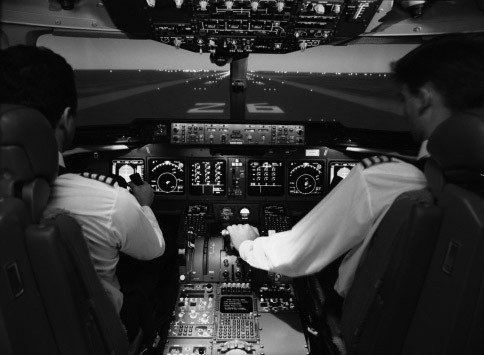Pilot study
Experienced aviators make better decisions while using less brainpower. Photo by Adastra

Landing an airplane is one of the hardest piloting techniques to master, and the stats show it: 36 percent of all airplane accidents and 25 percent of fatalities occur during the final approach and landing. Research led by Maheen Adamson, PhD, a Stanford clinical associate professor of psychiatry and behavioral sciences, reveals that expert aviators make safer decisions during this phase than less-experienced pilots because their brains behave more efficiently.
The scientists rigged an fMRI scanner so that 20 pilots — 12 moderately experienced pilots and eight experienced pilots — could operate a flight simulator while the scanner imaged their brain activity. Their task: landing at a virtual San Francisco International Airport.
They were instructed to begin their descent based only on their instrument readings, as is typical in most real-life flights. Once they reached 200 feet, the screen displayed the runway, either clearly or obscured by varying degrees of fog.
The pilots then needed to look from the instruments to the runway and back to make a snap decision about whether it was safe to land. Expert pilots made the correct decision 80 percent of the time, whereas those with less experience did so only 64 percent of the time. Interestingly, the fMRI scans revealed that the expert pilots scored higher while displaying only half as much brain activity.
Landing a plane involves constantly scanning instruments as well as the view out the window, says Adamson, and reduced neural activity in expert pilots indicates that they are able to complete the task at hand with fewer brain resources. The scientists traced the skill to the caudate nucleus, an area of the brain involved in regulating gaze as the eyes quickly shift their focus to different fixed objects. Adamson suspects that the brain’s ability to streamline multiple visual inputs is the result of experience.
This work opens the door to pairing fMRI and flight simulators — something that NASA is already doing in limited trials — to test pilots’ mental engagement during various flight maneuvers, or to guide pilots into behaviors that mimic the more efficient brain activity of more-expert pilots. “If we are able to train pilots to process instruments’ and other visual cues more efficiently,” Adamson says, “you could reduce the likelihood of accidents during landing.”
